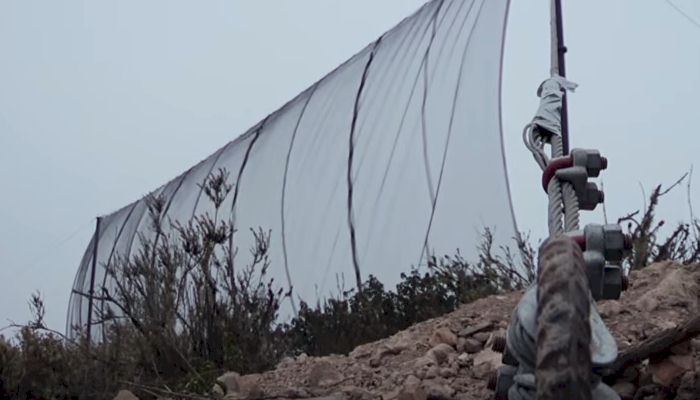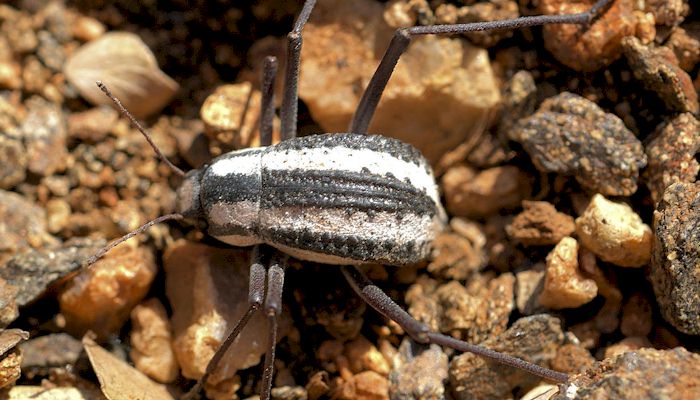|
February
2018 |
|
| Cloud Catchers | |
|
Some years ago I found myself on a bus traveling the northern coast of Chile from Santiago to Arica. I anticipated passing through beautiful coastal towns with gardens and flora and a Mediterranean climate much like I had experienced in Viña del Mar, a coastal city not far from Santiago. However, halfway through my journey I came to realize that the northern coast of Chile is an enormously arid swatch of land. Only later did I come to learn that I had passed through Atacama, the driest desert in the world. For miles and miles the landscape consisted of sand and desert - no living plants or animals in sight - hardly surprising when you consider that some parts of Atacama get less than a tenth of an inch of rain [2.5mm] per year. It's difficult to sustain life in this type of environment.
That's where cloud catchers come in. Although rainfall is virtually nonexistent, there are places in the Atacama Desert where fog clouds blow in from the ocean. Scientist have developed a novel method for collecting water from the clouds using specially designed nets like the one shown above.
But first, let's take a look at the Namid desert beetle (shown above). To keep itself hydrated, the beetle stands up with its body facing the breeze. Droplets of fog are captured on hydrophilic bumps on its back. Tiny drops collect on these bumps until their weight overpowers the electrostatic force. Then larger drops form and travel along hydrophobic troughs on the back until they make it to the beetle's mouth.1 The surface of the cloud catcher nets mimic this design by using both hydrophobic and hydrophilic materials to extract water from the clouds.2 Commercial concerns are developing coatings and treatments that will modify surface wettability properties to maximize the water collecting net designs.3 The fog collection nets in Chile were first built to supply water for plant growth in order to promote reforestation. However, their success led to additional nets that were installed to collect water for human consumption. Fog nets have been installed at dry but foggy coastal locations in Yemen, Guatemala, Nepal, Spain, South Africa, Peru, Oman, Canary Island, and other places around the globe. In Africa alone, people spend 40 billion hours a year fetching water. The fog net technology can be a boon to poor and drought-ridden locals. Researchers are using ramé-hart instruments to better optimize these biomimetic methods and designs. If you are working on harvesting clouds or any other technology that relies on controlling wetting regimes, we can help you. Contact us. 1 For a look at other bugs and how they use surface tension to survive, see our December 2015 Newsletter here: http://www.ramehart.com/newsletters/2015-12_news.htm. 2 For additional examples of biomimicry, see our April 2013 Newsletter here: http://www.ramehart.com/newsletters/2013-04_news.htm. 3 Once such
company is US-based NBD Nanotechnologies. The NBD stands for "Namid
Beetle Design". Aqualonis of Germany makes a fog net called the
CloudFisher. |
|
| New Product Announcement | |
|
One of the problems with measuring
surface tension - especially of liquids with low viscosity - is the
tendency for the pendant drop to ride up the side of the needle.
Cleaning the needle as well as choosing a higher gauge (smaller
diameter) needle can help alleviate this problem. However, another
solution is to use a needle that is lined with a hydrophobic coating
or liner.
We have had good luck using a needle with a PTFE lining and tip and we now offer it to our customers in three sizes. The p/n is 100-10-18-XX where XX is the gauge. The outside of the needle is 304 Stainless steel and the hub features an industry-standard Luer-lock connection for easy use with our microsyringe assembly or Automated Dispensing System. These needles can be purchase online here: http://www.ramehart.us/ptfe-lined-dispensing-needle/. |
|
|
Regards,
Carl Clegg |
|


